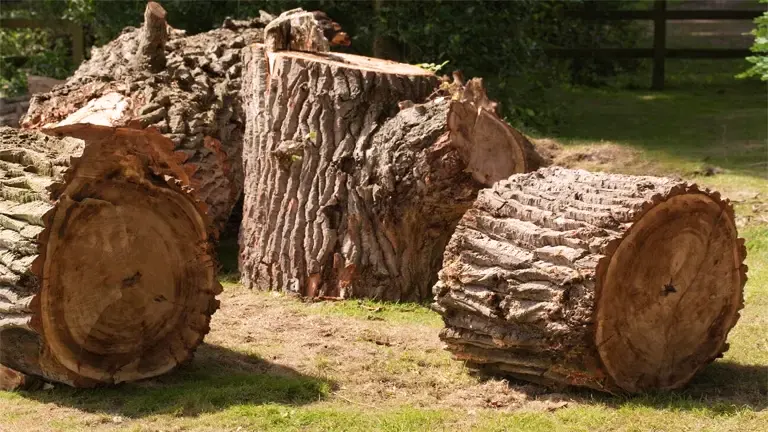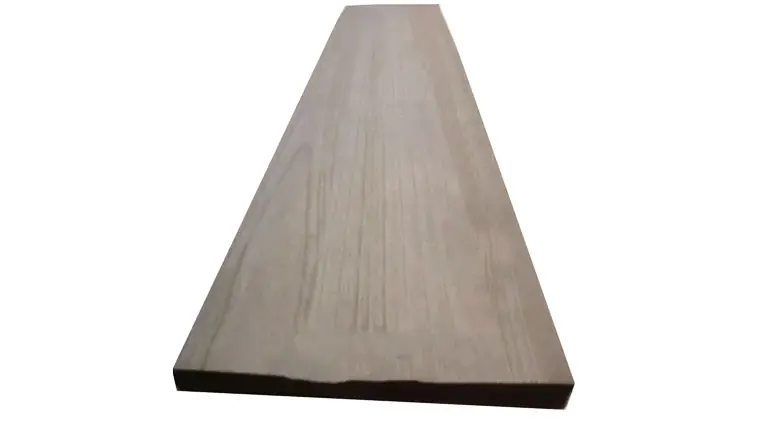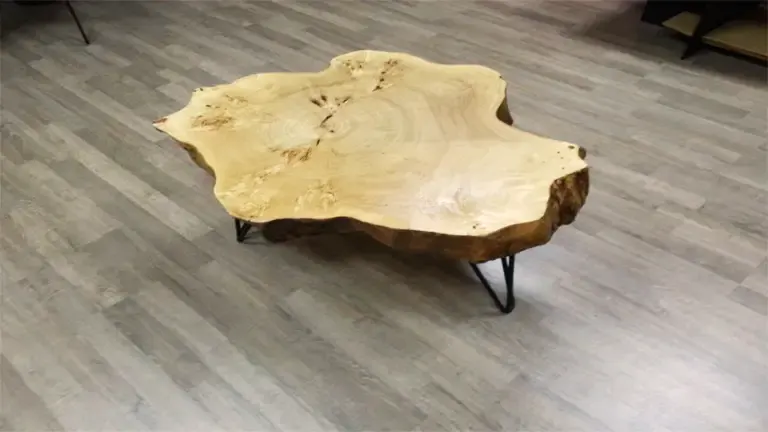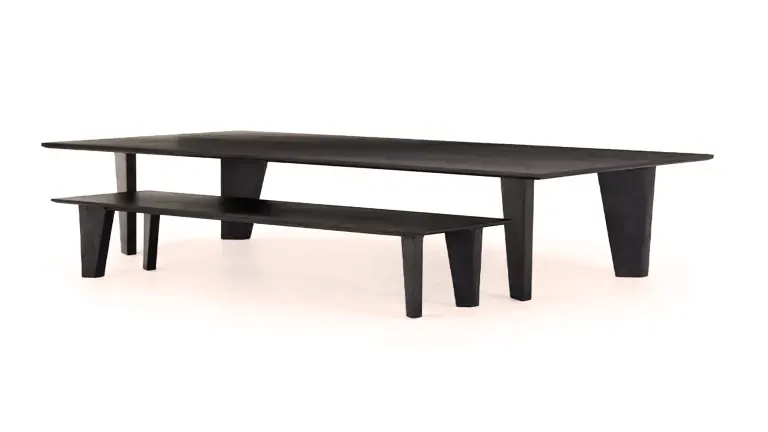Black Poplar Lumber
- July 31, 2023
- 1 comment
Black Poplar lumber, sourced from the Black Poplar tree (Populus nigra), is an esteemed hardwood with origins in diverse regions of Europe and Western Asia. Its distinctive qualities have earned it a favored position in the woodworking industry. One of its prominent features is the fine-grained texture, giving it an appealing and smooth surface.

Notably lightweight, Black Poplar lumber makes handling and crafting projects more manageable, which has contributed to its popularity among woodworkers. Additionally, its exceptional workability further enhances its allure, as it can be easily cut, glued, and machined. These attributes make Black Poplar an excellent choice for an array of woodworking applications, such as furniture, cabinetry, interior trim, plywood, veneer, and musical instruments.
Despite its widespread availability and affordability, Black Poplar lumber does not compromise on quality. Its elegant color spectrum, ranging from light yellow-brown to greenish-brown, adds to its visual appeal and allows for versatile applications. While it is not naturally resistant to decay and insect attacks, with proper treatment and finishes, Black Poplar can still be utilized for certain outdoor projects. Sustainability is a notable aspect of this wood, owing to its fast growth rate, though responsible logging and forest management practices are crucial to maintain its ecological balance.
| Property | Information |
|---|---|
| Common Name(s) | Black Poplar |
| Scientific Name | Populus nigra |
| Distribution | Europe, Western Asia |
| Tree Size | 20 – 30 meters (65 – 100 feet) tall |
| Average Dried Weight | 380 kg/m3 (23.7 lb/ft3) |
| Specific Gravity | 0.38 |
| Janka Hardness | 1,260 lbf (5,610 N) |
| Modulus of Rupture | 65 MPa (9,400 psi) |
| Elastic Modulus | 8 GPa (1,160,000 psi) |
| Crushing Strength | 37 MPa (5,350 psi) |
| Shrinkage | Radial: 4%, Tangential: 9%, Volumetric: 13% |
Color/Appearance:
Black Poplar exhibits a delightful array of colors, with the heartwood ranging from light yellow-brown to greenish-brown, while the sapwood appears paler. As the wood matures and is exposed to light, it tends to undergo a captivating darkening process, taking on a beautiful golden hue. This evolving color palette adds to the aesthetic appeal of Black Poplar and makes it an attractive choice for various woodworking projects.


Grain/Texture:
The wood of Black Poplar showcases a fine, even texture that contributes to its smooth and elegant appearance. The grain patterns typically display a straight to slightly interlocked configuration, further enhancing its visual charm. This desirable combination of fine texture and straight grain allows for excellent workability and lends an air of sophistication to finished pieces.
Rot Resistance:
While Black Poplar possesses many desirable characteristics, its natural resistance to decay and insects is relatively low. As a result, it requires proper protective treatments when used in outdoor applications to safeguard against rot and insect attacks. Regular maintenance and finishes are essential to preserve the wood’s longevity when exposed to the elements.
Workability:
Black Poplar is renowned for its exceptional workability, making it a preferred choice for woodworkers of all skill levels. The wood is easy to cut, shape, and join, enabling smooth and precise construction processes. Its cooperative nature in glueing and machining further adds to its appeal, making it an ideal candidate for a wide range of woodworking projects.
Odor:
When freshly cut, Black Poplar lumber emits a distinct, somewhat musky odor. While the scent may not be as pronounced or long-lasting as certain other wood species, it can be a characteristic noted during the woodworking process.
Allergies/Toxicity:
Black Poplar does not present any significant reports of allergic reactions or toxic effects. Woodworkers can handle and work with this wood without worrying about adverse health effects, making it a safe option for various woodworking projects.
Pricing/Availability:
Black Poplar holds an advantage over some other hardwood species as it is generally more readily available and affordable. This is attributed to its relatively fast growth rate and wide distribution across Europe and Western Asia, which ensures a stable supply for the market.
Sustainability:
Black Poplar is recognized as a fast-growing tree species, contributing to its sustainable harvesting practices. Its rapid growth rate allows for efficient replenishment and reduces the pressure on natural resources. However, as with any natural resource, it is crucial to practice responsible logging and forest management to ensure the long-term sustainability of Black Poplar.
Common Uses:
The versatility of Black Poplar lumber lends itself to a wide range of woodworking applications. This wood is commonly employed in crafting furniture, cabinetry, interior trim, and veneers, where its fine texture and attractive appearance contribute to the overall aesthetics. Additionally, Black Poplar finds use in making plywood and musical instruments, further showcasing its adaptability across various artistic and functional endeavors.



FAQs:
- Is Black Poplar lumber suitable for outdoor projects?
Black Poplar is not naturally resistant to decay and insects, making it less suitable for prolonged outdoor use. However, with proper treatment and finishing, it can be used for certain exterior applications. - How does Black Poplar compare to other popular hardwoods in terms of hardness?
Black Poplar is relatively soft compared to many other hardwood species. It falls on the lower end of the Janka hardness scale. - Is Black Poplar an endangered species?
As of my last update in September 2021, Black Poplar was not listed as an endangered species. However, it is essential to verify its current conservation status, as these listings can change over time. - Can Black Poplar be stained or finished easily?
Yes, Black Poplar takes stains and finishes well, allowing woodworkers to achieve various desired appearances. - Is Black Poplar suitable for carving or turning projects?
Yes, Black Poplar’s fine and even texture, as well as its workability, make it a good choice for carving and turning projects.








One of my hobbies is wood working and I usually like the finished product when I'm done. I do however have a question about a wood that I'd like to use for a project some time but I can't find any information about it or what uses it might have. I've been looking at an array of different types of woods for something that I would like to put together for my daughter but the wood that I'd like to use is one that I can't find any information about and I've looked every time I go looking for a piece of wood for a project. Now the wood that I'm trying to find out information on is Hawthorne. Now I know that there are a few different types of Hawthorne trees in the world and I don't know how many there are but I've been trying to find out and get some information on this wood for several years but have been unable to find or get any information on it. Now if you're a Christian like I am and you just happen to know that the crown that was put on Jesus'head was a branch of the Hawthorne tree that was twisted into a ring and used as a crown put on his head as they called him king of the Jews. Now I'm not wanting this wood because of that reason I'm just looking for something just a little different that I've not seen or ever used to make anything not even a small box to hold small items. I don't even know if it has ever been used to make anything out of it for any reason and I'm just wondering if it is used at all. If it's not used in wood craft then what is it used for if it is used at all or is it just cut down and burned up like I've seen it done to it most of the places that I've been in my life wherever it's been cleared out of. Can you tell me anything about it or what it is or might be used for if anything. Thank You for your help and understanding on this matter. I'm just looking for some information about this wood on what it might be used for or if it is just cleared out and burned up. Again Thank You for your help and understanding and may God bless you and your family. And remember I'm just looking for information about this wood. Thank You from a fellow wood worker to another Rick Beck
Rick Beck
July 31, 2023 3:02 pm